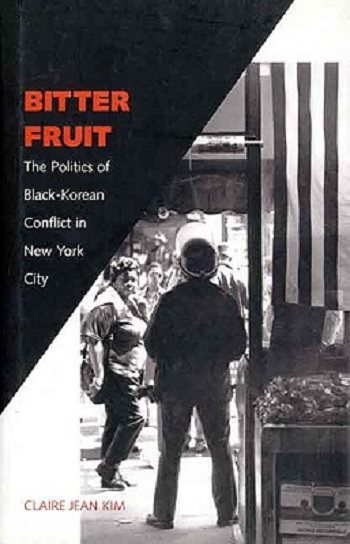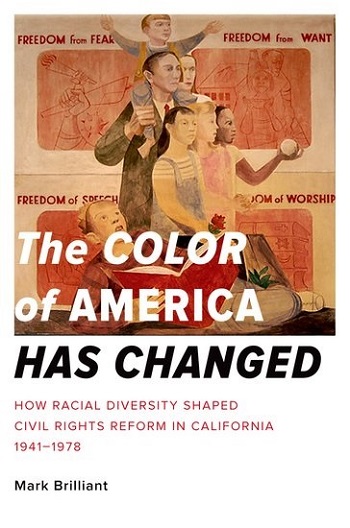A COMMON STRUGGLE
It was the summer of 2012 and I was set to cover my first shooting as a reporter. The shooting took place in a predominantly working-class African American neighborhood in southeast D.C. Two children and a counselor were caught in some crossfire. At the time, I was an intern for a local paper, and as one of the handful of brown faces in the newsroom, I wanted to provide a voice for others of color in the community.
I spent the afternoon interviewing residents. Most expressed frustration and anger. They felt forgotten. I shared in their perspective, having witnessed even in my short time living in the city, the widening gap between rich and poor, white and black.
The article was published and through the rest of my career, I continued my role as a person of color seeking to reflect the struggles and perspectives of other black and brown peoples. Often, the people of color (POC) I interviewed were quicker to open up to me as compared to my white colleagues. After all, I too, understood what it felt like to be ignored, to be seen as lesser.
Whether it was speaking with Native Americans before an event, or with undocumented Asian Americans during immigration reform, they knew and so did I, that at some level, we were in this fight together, against a status quo that sought to dehumanize us. Over the years, I’ve seen that spirit persevere, of us relating to one another, especially now, as the Trump administration is pushing forth racist and xenophobic policies daily.
“They knew and so did I, that at some level, we were in this fight together, against a status quo that sought to dehumanize us.”
In fact, I took a quick survey of friends, to help explore this. The survey was meant for friends of color, and after a few days, 70 people answered my questions. Thirty-one respondents identified as Black or African American, while 18 were Asian/Pacific Islander and nine were Latinx. The remaining were American Indian, or mixed, or didn’t fit into any of the mainstream categories.
Skimming the results, it became obvious that there was very little disagreement on most questions among African Americans, Asian Americans, and Latinx respondents. As expected, the vast majority (over 60) were in favor of taxing the wealthy to pay for social services, supported affirmative action, and wanted immigration reform that would create a pathway to citizenship for undocumented residents. Most also desired removing Confederate monuments, with only five expressing some disapproval. When asked to rank issues according to their personal importance, all three major racial groups placed access to healthcare as their main concern.
However, on the final question over whether Asian Americans, African Americans and Latinx shared common political interests, divisions began to emerge. It reminded me that as much as the term “person of color”/POC does reflect the reality of non-white groups struggling against a common enemy, that ultimately, there were significant differences in how each group experiences oppression.
Although 10 Asian Americans who responded believed that Asians, African Americans, and Latinx shared common interests, there were five others who either slightly or strongly disapproved of the statement, with three who didn’t know enough to say. African Americans were nearly split in their responses, with 15 approving and 12 disagreeing with the notion that all three major racial groups held common interests.
“There were significant differences in how each group experiences oppression.”
The African American respondents who didn’t approve of the statement expressed concern over anti-blackness in Asian American and non-Afro Latinx communities. One respondent answered bluntly in the section meant for comment: “The only other group that shares common political interests with Black Americans are Native Americans.”
The responses were a necessary reminder. Despite connecting with many of my interviewees who are African American or Latinx, I am gaining an awareness of the gap between my situation and theirs. After all, while they suffer constant police surveillance and lack of resources, including in neighborhoods that are middle class, I have the privilege to simply hop in my car and return to my apartment, surrounded by supermarkets, and trees, miles away.
WE ARE NOT THE SAME
Claire Jean Kim is a professor of political science and Asian American studies at the University of California, Irvine, and the author of Bitter Fruit: The Politics of Black-Korean Conflict in New York City, which as the title suggests, explores the troubled relationship between black and Korean Americans in the early 1990s.

Kim acknowledges the resonance of utilizing the term “people of color” (POC), connecting it to moments in history when it was prudent to do so, such as W.E.B. Du Bois’ attempt at bringing together anti-imperialist Asians and Africans and African Americans under one banner, or during the 1960s when Asian American, African American, and Latinx activists fought to expand civil and economic rights. But she also warns against using the label without “a critical eye.”
“The crux of the matter is how do we look at what is common among these subordinated groups without erasing or refusing to see the differentials in power,” she explained to me, “If we don’t see them or grapple with them, then there will be no alliance that’s effective.”
It is true that all racial minorities are impacted by white supremacy. However, as Kim argues, using the term “POC” assumes that they are all impacted or harmed the same way, which is simplistic and wrong.
“How do we look at what is common among these subordinated groups without erasing or refusing to see the differentials in power?”
For instance, black Americans are more likely to be harassed by the police, and to be trapped within neighborhoods that have been suffering under decades of economic and racial segregation. The U.S. social order, Kim says, was structured by anti-blackness.
Hence, it is important to avoid using “POC” when dissecting problems like incarceration or police brutality, and instead, to be specific in discussing who actually is being harmed by these policies. If not, these movements that want to end white supremacy and capitalism will be misdiagnosing the problems and won’t be promoting the best policies to solve them.
“It’s an alliance built on sand. If you’re not starting with actual structures of power and papering them over that we’re all under one rubric of people of color, the alliance will eventually break down. It won’t be a solid basis,” Kim said.
Further, tensions among groups of color can be exploited by those who want to maintain the status quo. This is what happened post-WWII in California when the potential for a mass movement to end racial discrimination was wasted. As described by historian Mark Brilliant in The Color of America Has Changed: How Racial Diversity Shaped Civil Rights Reform in California 1941-1978, there were efforts to unite African Americans, Mexican Americans and Japanese Americans around common issues and to perceive themselves as people of color. Although there were positive civil rights achievements during that era, the different organizations representing groups started to realize that their issues weren’t the same.

Mexican Americans were most concerned over labor issues, and about farm workers. However, liberal politicians such as Pat Brown didn’t recognize this. Once he became Governor, Brown was extremely vocal in promoting policies that were very important to African Americans, while believing he was helping all people of color. Eventually, Mexican Americans became resentful and drifted toward supporting Ronald Reagan, who became Governor in 1966.
Sensing this frustration, Reagan drove a wedge between communities of color. An example of this was his support for Spanish-speaking and Chinese-speaking students to have teachers and faculty who share their culture and language, and claiming that desegregation would hurt them by scattering them across the state. Tactics such as these worked, and African Americans and non-black people of color were unable to come together to effectively oppose his dangerous right-wing policies.
“POC”AS FRAMEWORK FOR COALITION
On the night of Trump’s election, I received texts and calls from friends, most of whom were of color, all of them worried and scared. As the year progressed, their anxieties evolved into empathy. My South Asian American friends now want to know ways they can help movements like Black Lives Matter. My African American friends now express sympathy for Sikh Americans. My Latinx allies are learning how Vietnamese Americans, Cambodian Americans, and Hmong struggle with poverty and neglect.
Akin Olla, a friend of mine and an experienced organizer for racial and economic justice (including unionization on-campus at Rutgers University), views the term “POC” as a way for different peoples to feel connected to each other.
“It’s a coalitional term that allows for organizing against common issues,” he explained, “While obviously it’s not a single static identity and anyone who implies that is misled, I think it’s a political strategy that allows us to more easily topple a system that impacts us all, admittedly in different ways.”
“It’s a political strategy that allows us to more easily topple a system that impacts us all, admittedly in different ways.”
Olla, who identifies as Nigerian American, says that “POC” is a framing device. For instance, if an East Asian American positions themselves as a person of color, they will feel a kinship to other POC and will be personally invested in issues such as ending the War on Drugs and racial profiling.
“What impacts one group of people of color, it will affect another group of color eventually,” he said.
* * *
Asian Americans, African Americans and Latinx should adopt the identity “POC” if it means recognizing they share common enemies, without losing sight that forces like anti-blackness play a significant role in how and why groups are treated differently.
Apart from protesting and being in spaces where various groups of color interact, it is equally important to expand one’s own knowledge of history and politics.
As Professor Kim explained “If you do not have a foundation in U.S. history and preferably global history, you cannot understand these issues.”
It was years later, when I was covering another shooting in a predominantly lower middle class black and Indo-Guyanese neighborhood. This time, I went through the motions, interviewed who I needed to, took mental pictures to describe the scene. It took me moments to write the article, and once it was published, I was back in my apartment, chewing on leftover Chinese noodles. I kept the TV on, and played music, to drown out the thoughts piling up inside. It was the first time in a while that I began to hesitate and reflect on the distance between me and the people I wrote about, the fact that I led a relatively peaceful life compared to theirs.
According to Kim, this type of thinking is necessary. Although encouraged by examples of people of color working together to confront Trump, she hopes we continue to ask broader questions about how and why the U.S. racial hierarchy exists and operates.
“It’s about looking at the whole picture, and asking if I care about racial justice writ large, what does that commit me to,” she stated. “What do the ethical obligations entail? If I want to combat the damage that race does, what does that commit me to?”
If we are seeking to end white supremacy and capitalism, it requires digging deep into who we are, into what separates us, as well as what can connect us, as allies, as fighters for social justice, as survivors.
* * *
Sudip Bhattacharya is currently a Ph.D. student in political science at Rutgers University, where he focuses on race and social justice. He has a Master’s in journalism from Georgetown University, and has had his work published at CNN, The Washington City Paper, The Lancaster Newspapers, The Daily Gazette (Schenectady), The Jersey Journal, Media Diversified (Writers of Colour), Reappropriate, AsAm News, The New Engagement, and Gaali Gang.













